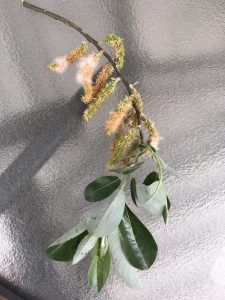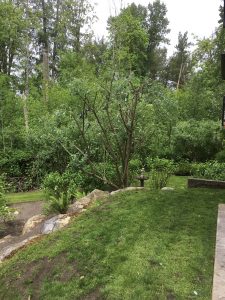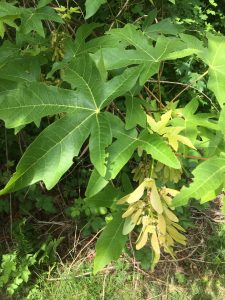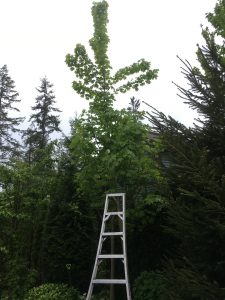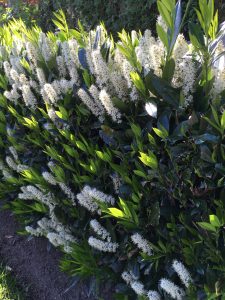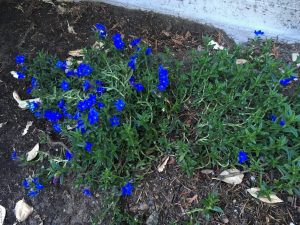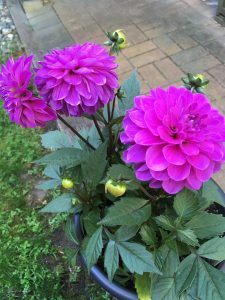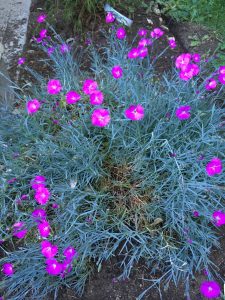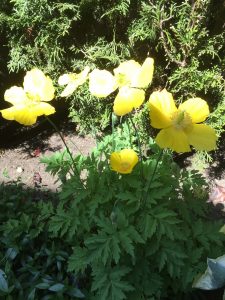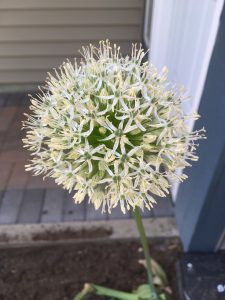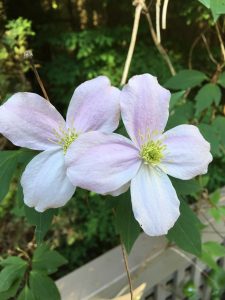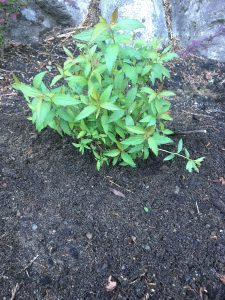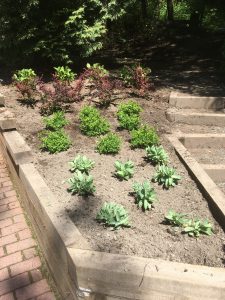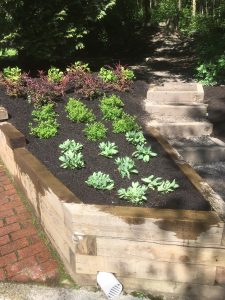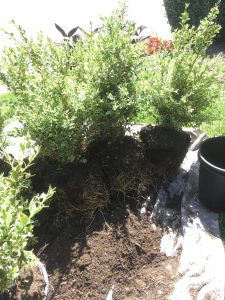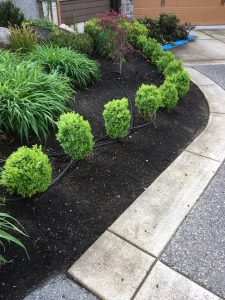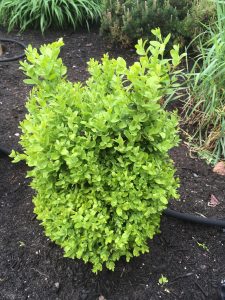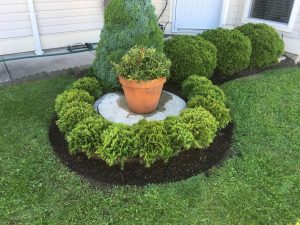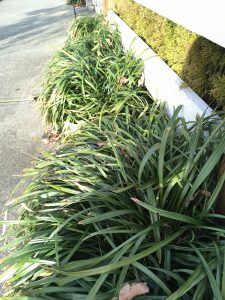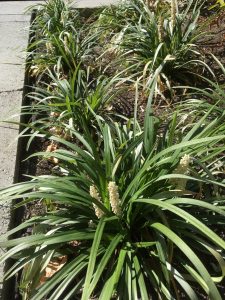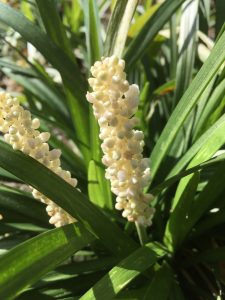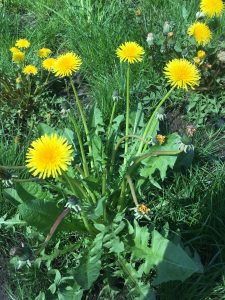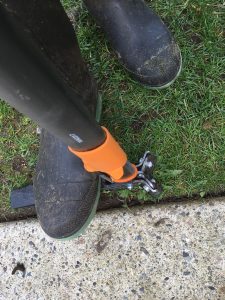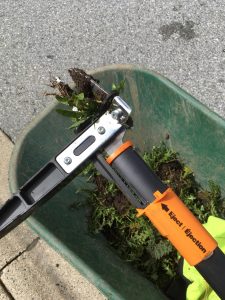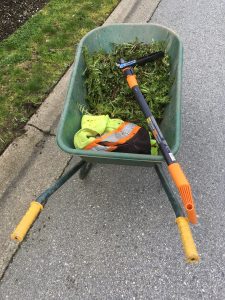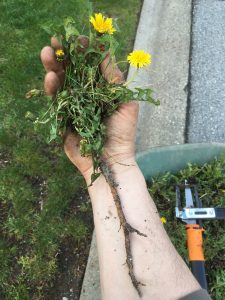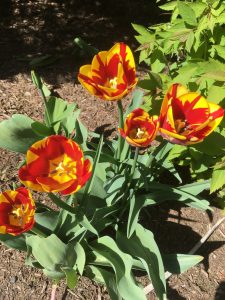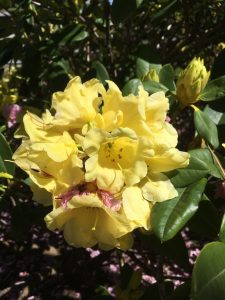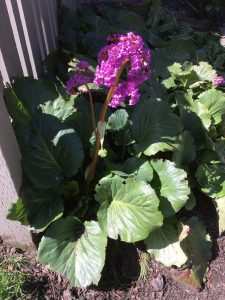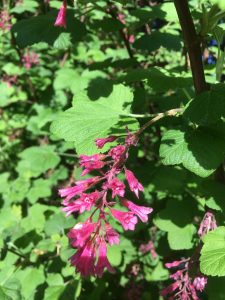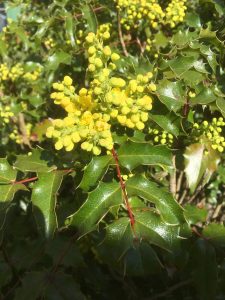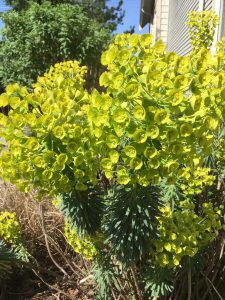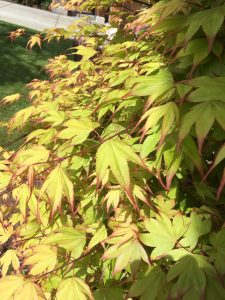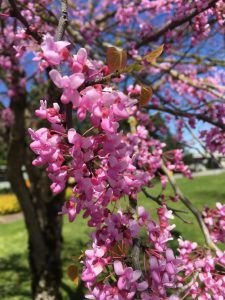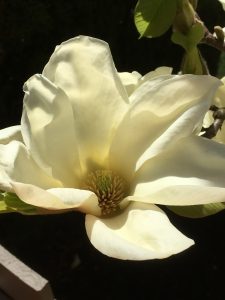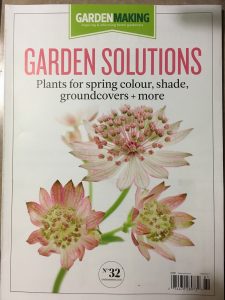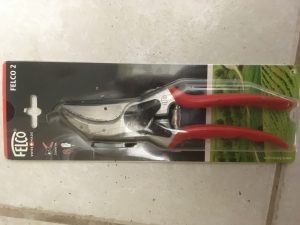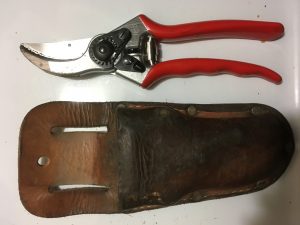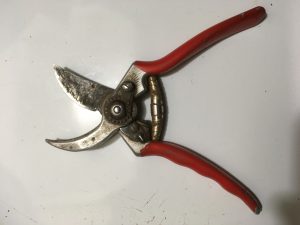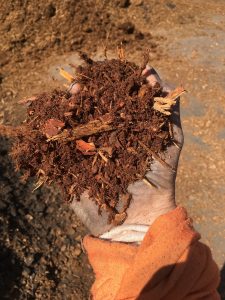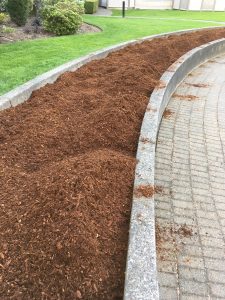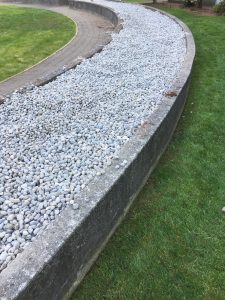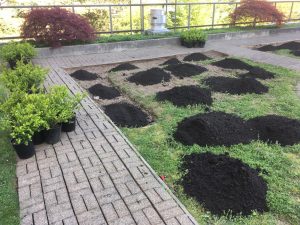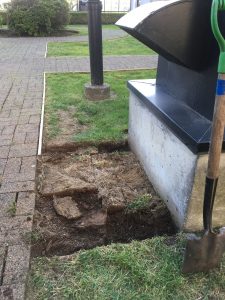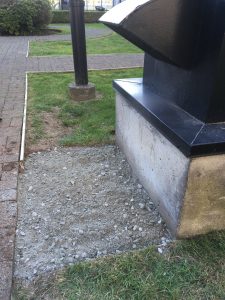I hate topping trees and so does the International Society of Arboriculture (ISA); they even publish pamphlets detailing why the practice of tree topping is bad. This blog post, however, shows two cases where topping was somewhat justified and forced.
It was forced because a) the strata client insisted that it be done and they pay the maintenance fees so all you can do is attempt to educate them and, b) the natives in question threatened to overwhelm the spaces they occupy.
Salix discolor
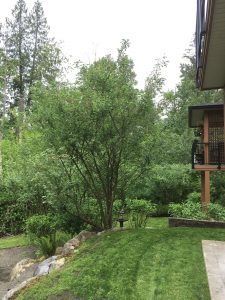
Before height reduction, Salix discolor. Note its landscape use close to woodland in the background.
This is our native willow and it’s technically a shrub. In this setting it’s used as woodland margin shrub. But there is one problem. It reaches 7m heights quickly and the owners don’t want to see it from their upstairs patio, preferring instead to look at the tall native Douglas firs (Pseudotsuga menziesii).
So I went in with an extendable chain saw, pole pruners, a ladder and my best friend, a Japanese hand saw. Remember, most tree work can be done with a good hand saw.
The idea was to bring the willow height down and it went fairly well although I was a bit frustrated with some of my cuts. The willow is very soft and if you fail to finish your cuts briskly then you risk bark peeling below your cut. But considering that this is a native shrub, I expect it to shoot out again after my assault.
Acer macrophyllum
I wasn’t very happy about being sent in to top a maple tree but what do you do when the backyard belongs to the in-coming strata president? One look at his backyard made me wonder if the big leaf maple (Acer macrophyllum) was planted or simply drifted in. If you could look to the right you would see giants of the same species in the woods. There the maples are left alone and they reach the regular 30m tall, 25m spread dimensions.
Here it is clearly not the right tree species so topping it is somewhat justified except, of course, the tree will grow again and I have a feeling I will get to know it intimately as the seasons pile on.
Most of the work was done with a pole pruner with the exception of the biggest leader. That required a saw and some care because there is a planted garden under the tree.
The owner was happy with my work (of course!) but all I was thinking about was how the tree did not belong there.
Conclusion
Tree topping is a horrible idea but in some cases it has to get done. Please try to avoid it as much as possible. The big-leaf maple above will grow again which means I will get called in periodically to bring it down. The same is true for the willow which will eventually reach the upper patio sight lines.


